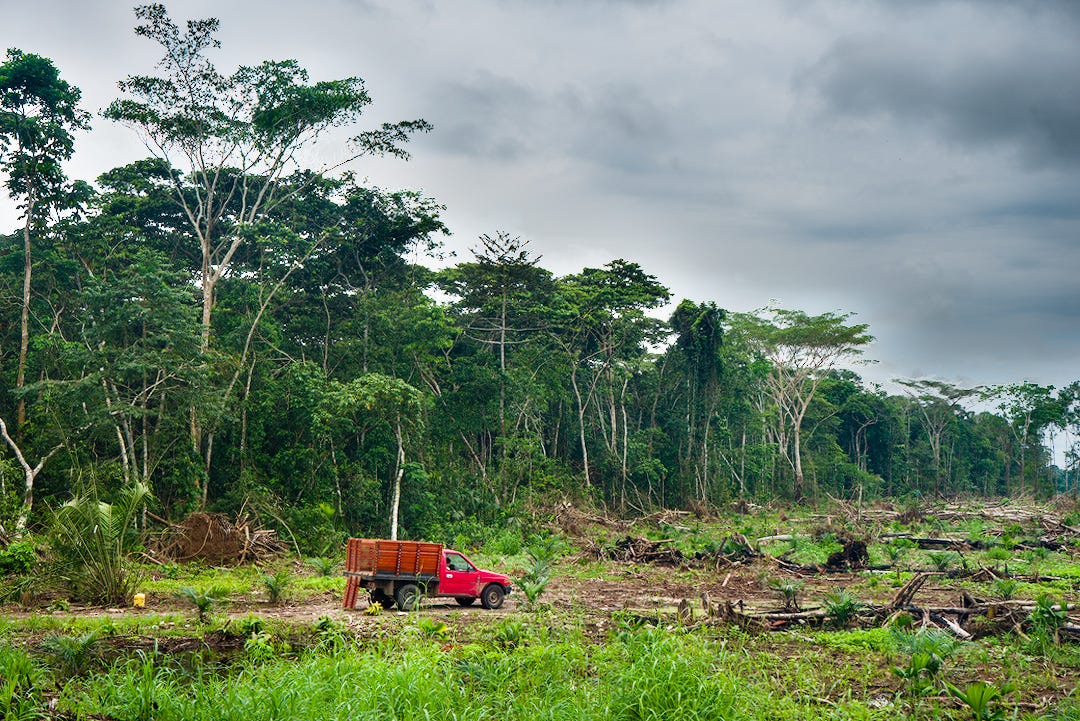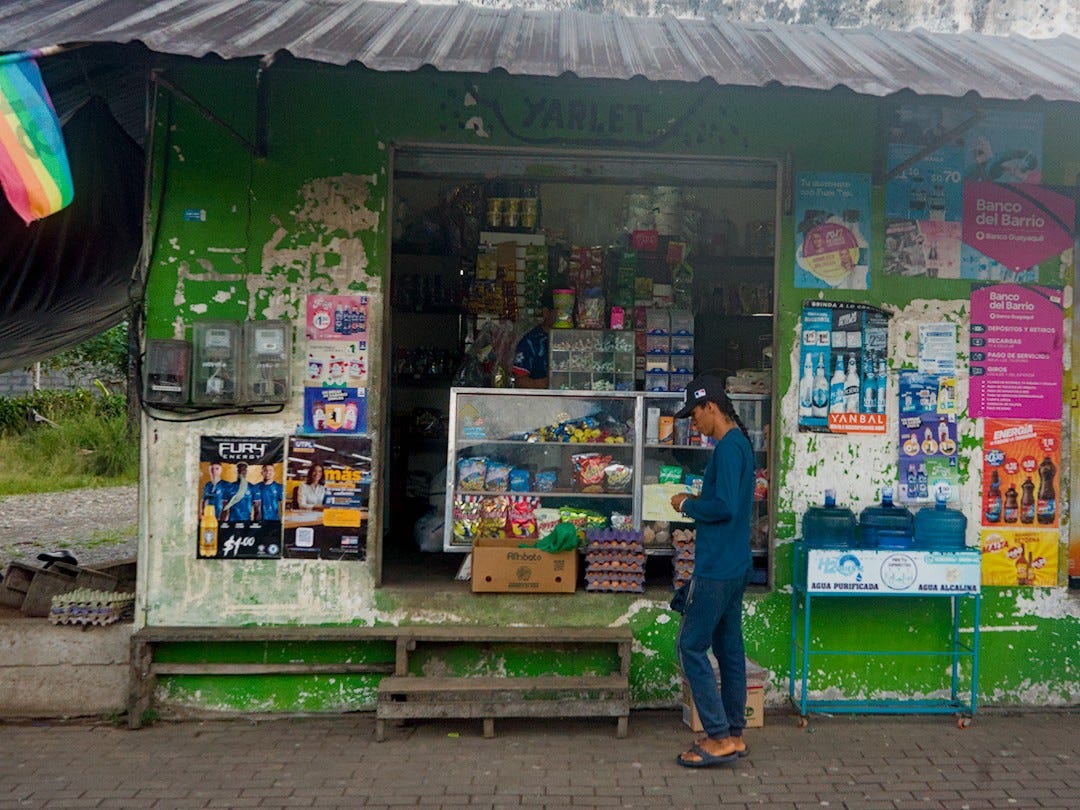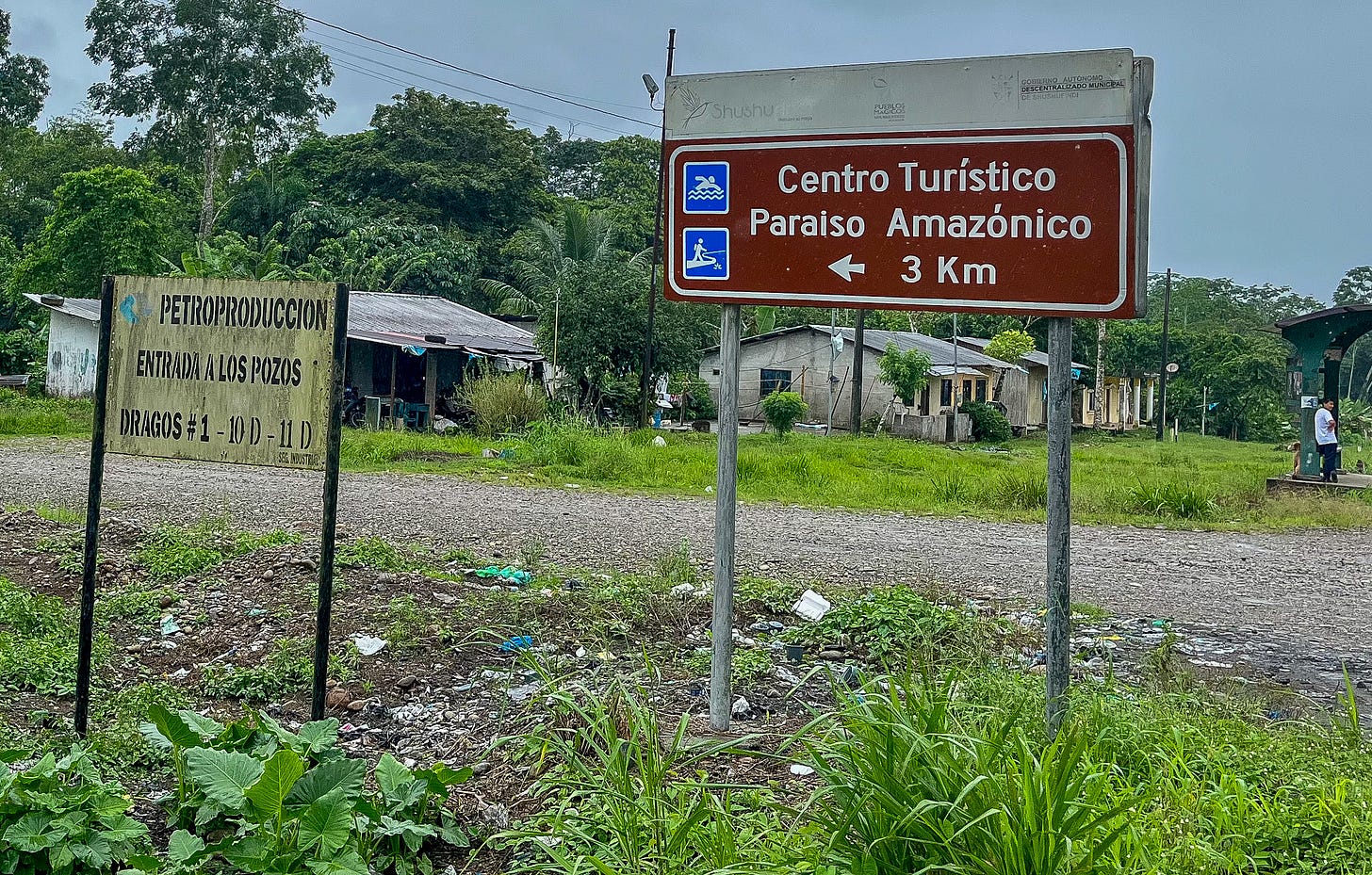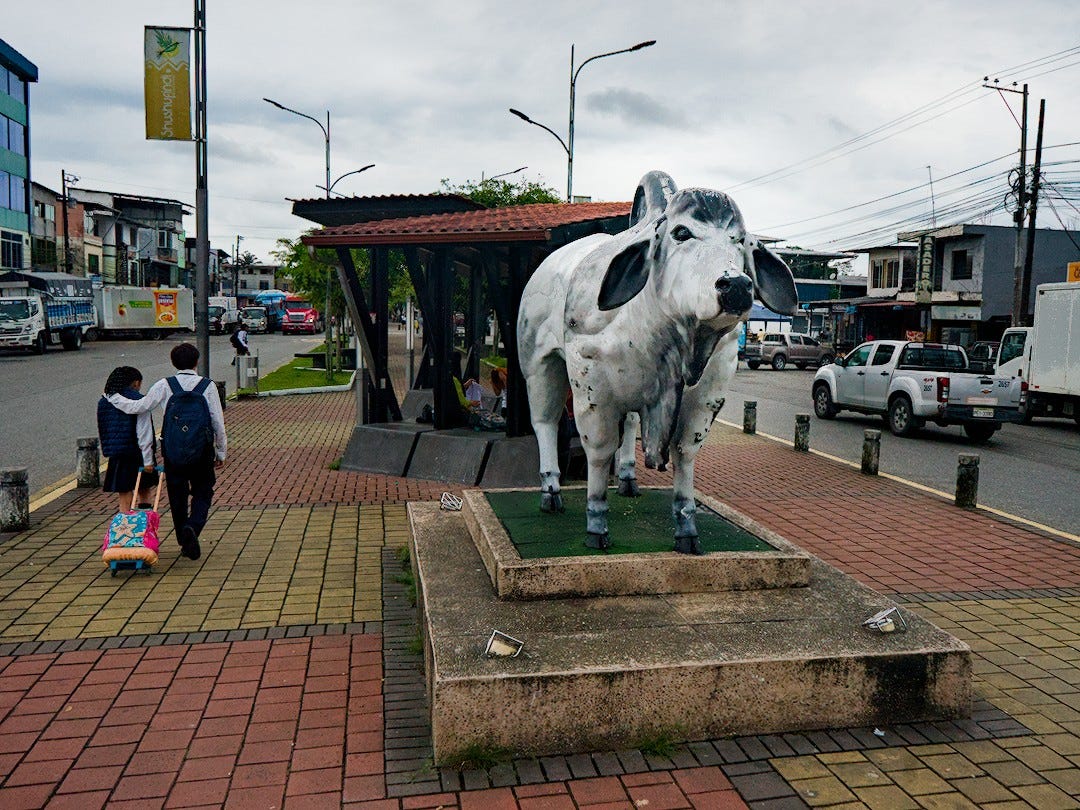Amazon Borderlands
Cycling across the border, we witness how conflict spared Colombia's Amazon while "peace" doomed Ecuador's.
Written by Douwe den Held; Edited by Anastasia Austin
Few other people take the Amazon route between Colombia and Ecuador. After leaving Puerto Asís, the southern department of Putumayo’s biggest city, we have the road to ourselves, aside from a few oil tankers transporting crude to Ecuadorian refineries.
Soon, a pipeline peeks out from the brush. From then on, it runs along with us, sometimes disappearing into the greenery, but mostly clearly visible from the road, a relic of the oil economy that once boomed in this region.
Underground, a vast oil reserve stretches from Colombia through Ecuador and into northern Peru. This oil field is the Amazon’s biggest and, in the 1960s, Texaco (today Chevron) had big plans to exploit it, breaking ground at drill sites in both Colombia and Ecuador.
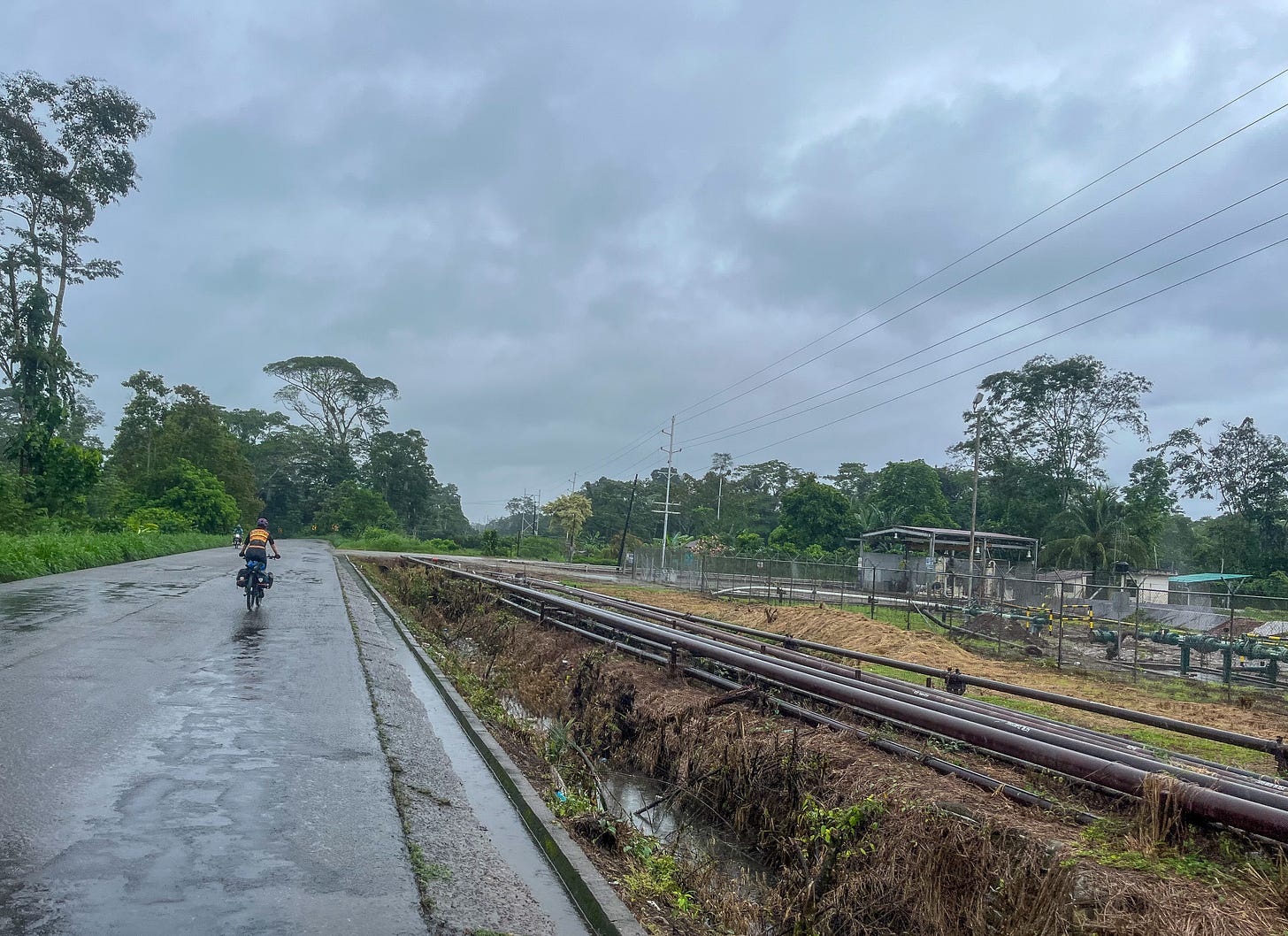
But by the 1980s things had changed. Guerrilla groups, paramilitaries, drug traffickers and the state fought each other in many of Colombia’s regions. In Putumayo, guerrilla groups began targeting oil infrastructure as a way to put pressure on the state and squeeze the companies themselves for extortion rent.
Between 1986 and 2015, the guerrillas carried out over 1,000 attacks on Putumayo’s oil pipelines, leading to 160 oil spills. Cycling here, I realize just how easy this must have been: the pipeline runs right next to the road, above ground, in a sparsely populated area.
Understandably, the attacks scared away big business. And, though oil exploitation never fully ceased, Colombia only saw a fraction of the investments compared to its safer next-door neighbor, Ecuador.
Colombia’s conflict didn’t just deter big oil in Putumayo; it stifled public and private investment in general. Meanwhile, on the Ecuadorian side of the border, oil money fueled the construction of roads and whole towns, deforesting virgin Amazon rainforest.
The infrastructure attracted other industries, like palm oil and banana plantations, as well as ranches, creating jobs and driving the local economy. But it also came at a price, speeding up the deforestation of a globally vital ecosystem already under threat.
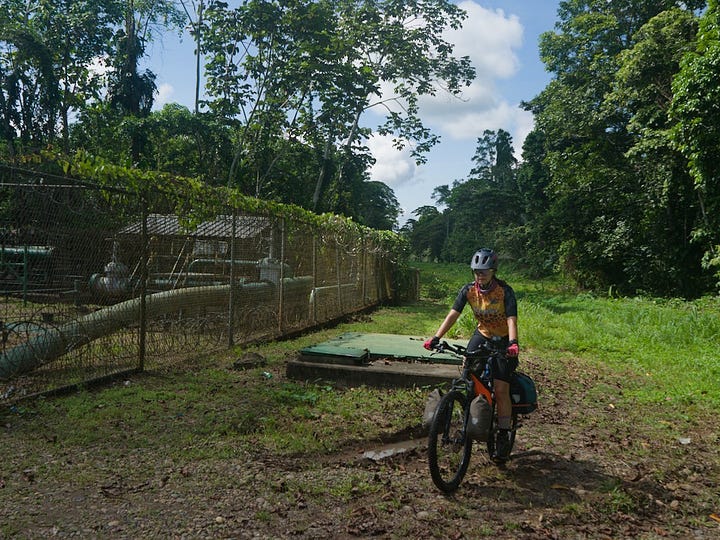
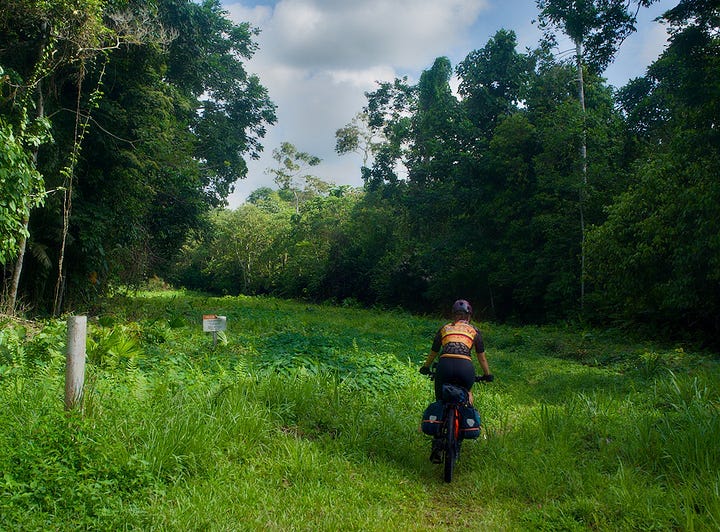
The road running along the pipeline becomes progressively livelier as we approach La Hormiga, the last town before the border. It’s bustling: the main street lined with brothels, car mechanics, liquor stores, and more brothels. People fill the bars and restaurants.
For decades, the notorious guerrilla movement, the Fuerzas Armadas Revolucionarias de Colombia (FARC), maintained a southern base here. And when they demobilized in 2017, La Hormiga became the headquarters for one of the biggest dissident factions to reject peace: the Border Command.
The Border Command controls drug trafficking routes in both Colombia and Ecuador, making its money primarily from the cocaine trade. Putumayo is one of Colombia's main coca cultivation regions. The Border Command buys much of the half-processed coca base and refines it into cocaine, which they smuggle into Ecuador for shipment to Europe and the United States.
Coca cultivation, too, spurs deforestation, as swaths of jungle are cleared to grow the crop. But its destruction is relatively small compared to big oil, mining, ranching, and timber -- all industries scared off by the extortion, violence, and instability that accompany the presence of armed groups, like the Border Command.
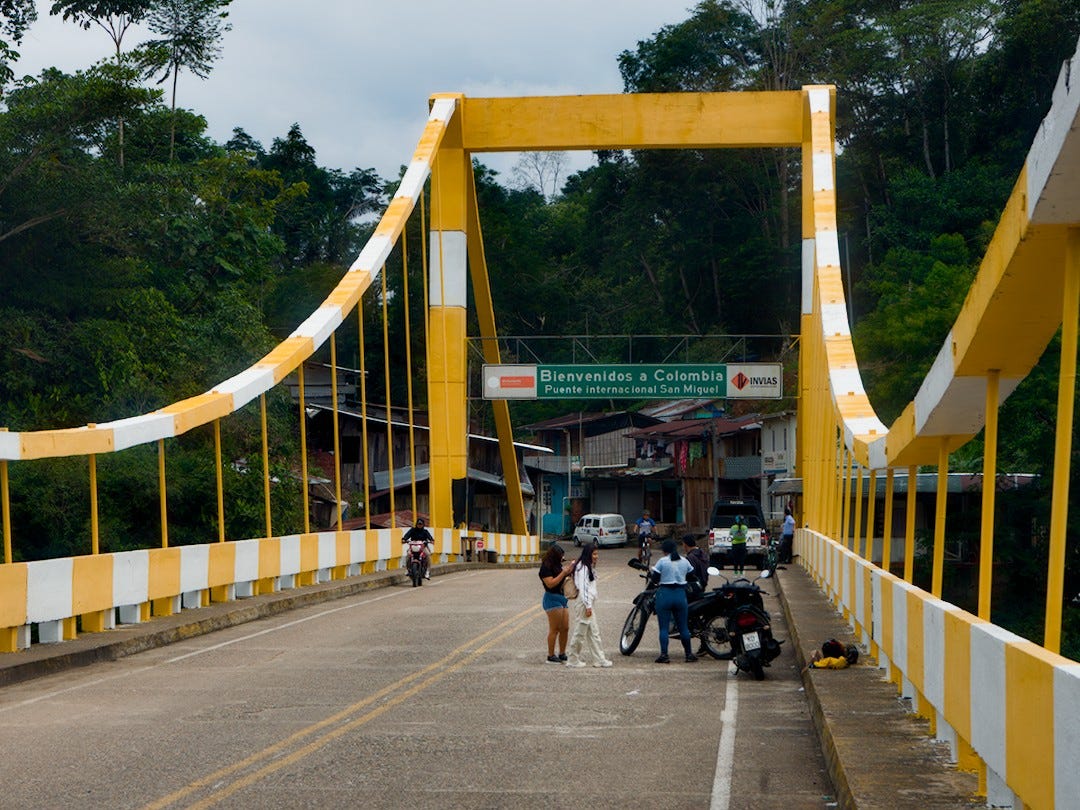
From La Hormiga, we continue to follow the pipeline, which eventually brings us to the border crossing. A narrow yellow bridge spans the San Miguel River, connecting the two countries. It is quiet, just a few day-trippers taking selfies. The bustle of bigger border crossings – vendors hawking SIM cards, offering currency exchanges, or rushing you into a taxi – is unimaginable here.
Just into Sucombíos province, the Ecuadorian Amazon seems more alive. The road becomes a hallway leading between walls of green and the noise of the jungle – crickets, frogs, other creatures – envelops you. It’s impressive.
It turns out, it’s also deceptive. The corridor lasts just a few kilometers and then opens up. Soon, I see a patch of recently deforested land on the edge of a virgin rainforest. A man gets out of a beat-up pickup truck to inspect the first rows of banana plants that will soon erase any traces of the jungle.
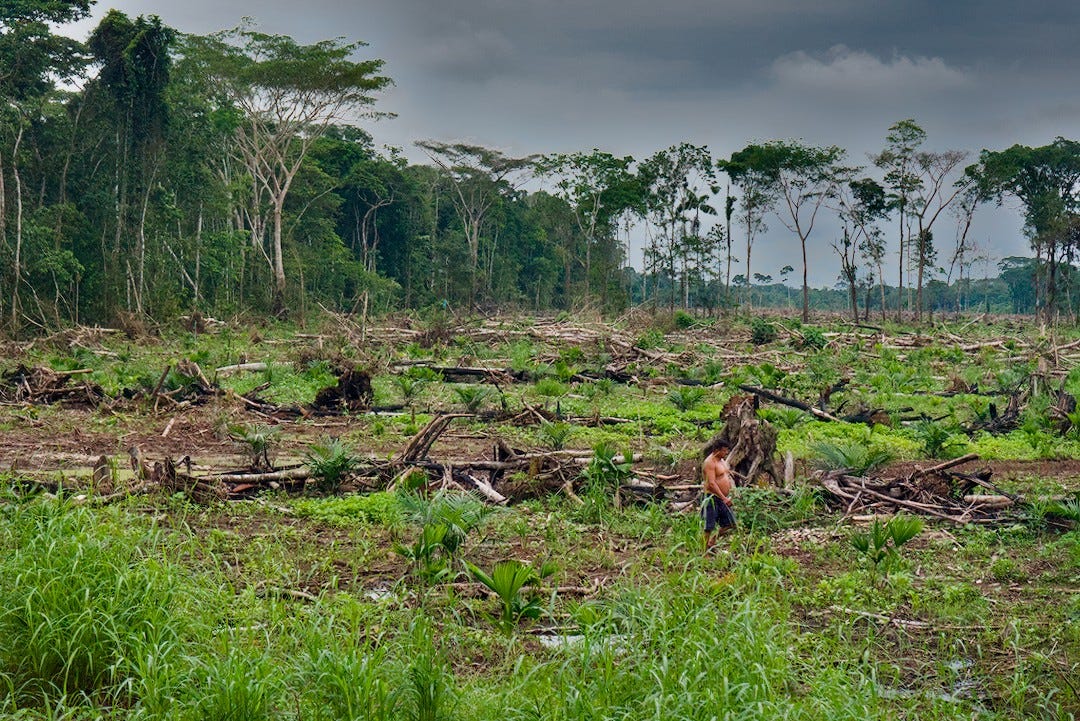
Some parts of the Ecuadorian Amazon are better protected. But along our road through Sucombíos, the absence of conflict, paired with a long succession of extractivist presidents, has meant that economic reality overrides regard for nature.
Indigenous groups inhabited Sucumbíos before Texaco moved in. But as the company and its successors drilled thousands of wells, they unleashed rapid, unchecked development across the region. The Ecuadorian government approved and invested in an extensive road network to facilitate oil production.
These roads became a powerful driver of deforestation in their own right. Once the government opened access routes for oil operations, migration surged, and colonists cleared hectare after hectare of virgin rainforest for agriculture, ranching, and timber extraction.
This is the law of the jungle: New roads inevitably lead to skyrocketing deforestation.
Riding into the industrial heartland of the Amazon, we reach the first Ecuadorian city, which epitomizes the importance of oil to this region. Oil wells, pipes, and flow stations surround Lago Agrio.
Officially, it’s called Nueva Loja, but few use that name. On billboards, road signs, and buses the city is “Lago Agrio” – Bitter Lake – a playful take on Salt Lake City (Utah), from which the American oil workers who came here in the 1970s hailed. Statues of oil drilling rigs adorn its main square.
As we cycle deeper into the Amazon, oil pipes run parallel to pretty much every road, too. They differ from the ones we saw in Colombia in that they are bigger, more imposing, and actively in use.
This is the Amazon you don’t see in nature magazines. Yet, signs for tourism destinations hug signs for oil deposits -- the paradox unacknowledged.
We stop for coffee in a small town: little more than a single road lined with houses. The Amazon’s untamed green expanse is nowhere to be found, replaced by cattle farms. A large statue of a cow decorates the main street.
Economic incentives dominate this part of the Amazon.
While many Ecuadorian communities, especially indigenous ones, are on the frontlines of nature protection, the bitter irony is that locals here celebrate the extractive economies that will likely make their home less livable.
Nature does not pay their rent. Petrol does. Palm oil does. Cattle do.




